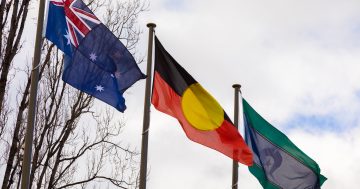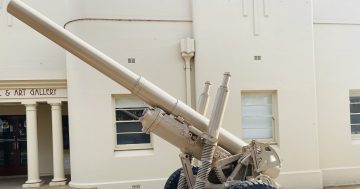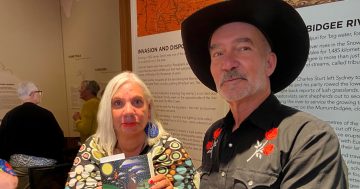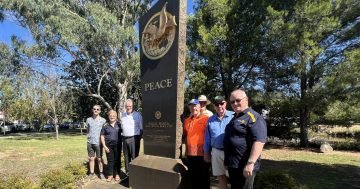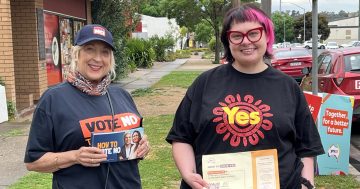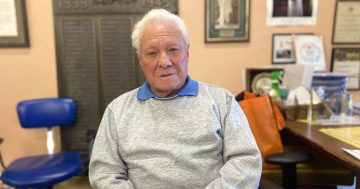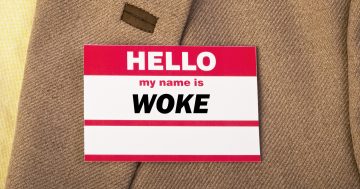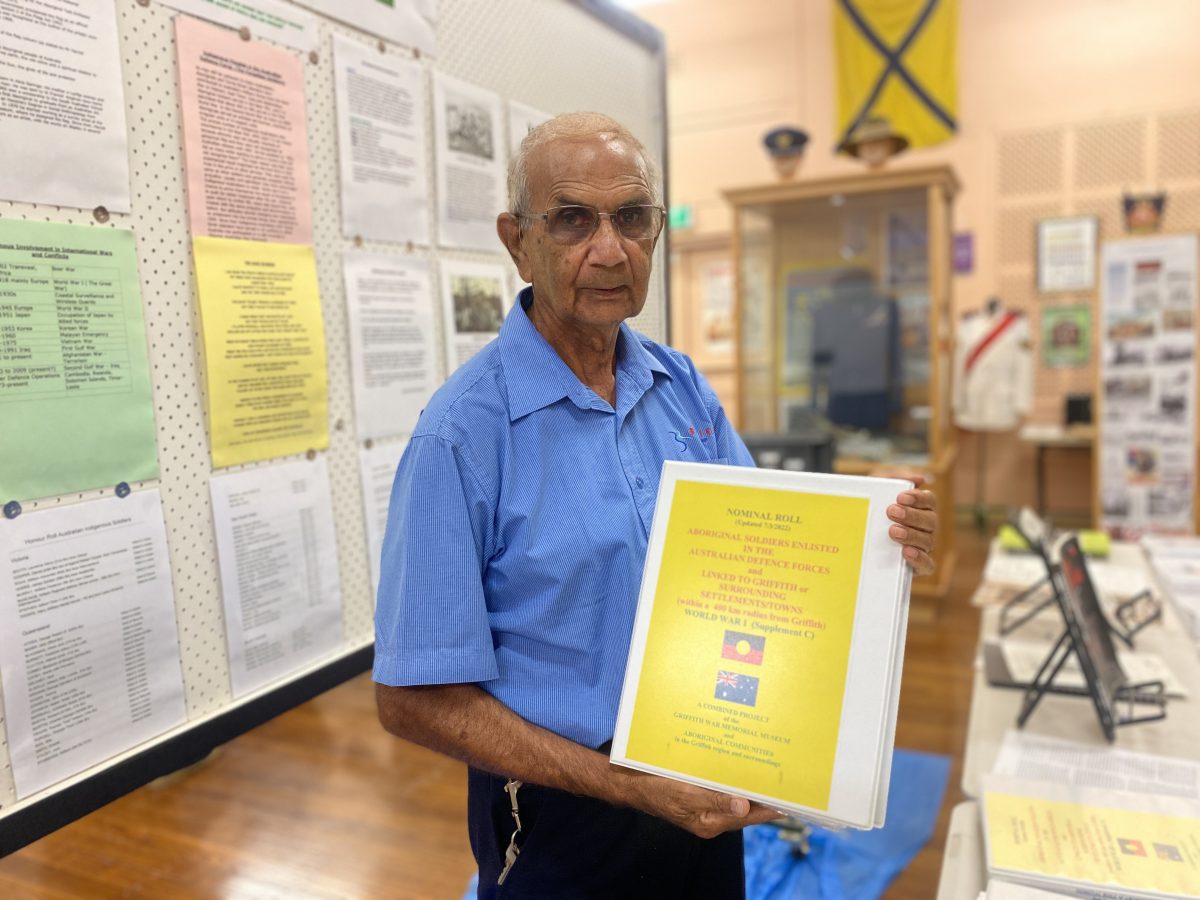
Keith Williams tells the incredible story of his WWI veteran grandfather William. Photo: Oliver Jacques.
The shameful treatment of Aboriginal soldiers who fought for a country that refused to recognise them as citizens is being chronicled by the Griffith War Memorial Museum.
New exhibits show that Indigenous troops fought for Australia as early as 1901, when Queensland trackers were taken to South Africa to support British forces in the Boer War. Incredibly, due to the White Australia Policy, they weren’t allowed to return to their home country and were left to fend for themselves in a foreign land.
In later conflicts, Aboriginal soldiers were forced to lie about their heritage to enlist in the army, where they were assigned the most dangerous roles before being denied benefits given to other veterans when they came back to Australia.
Museum secretary Pat Cox wants to not only tell these stories but also involve the local Griffith Wiradjuri community in designing how the history is presented.
“Exactly 10 years ago we put up an Indigenous display and we are continuing to add to our records,” she said.
“We’ve got the names of 274 Indigenous soldiers from the wider Griffith area who have served in conflicts. We felt we haven’t had enough contact with the Indigenous community … we thought it was time with ANZAC Day coming up to bring the community in, we had a meeting and they said, ‘We can do some artwork here’.”
Mrs Cox invited the Griffith Aboriginal Medical Service (AMS) men’s and women’s groups to the museum to both paint designs and learn more about the courageous history of their digger forefathers at an open day on Friday, 31 March.
“I never knew a lot of this stuff existed,” AMS wellbeing coordinator Vickie Louise Simpson said. “I’ve found out three of my grandmother’s brothers’ names and my grandmother’s sister’s husband.
“Pat (Cox) rang me and asked, ‘How can we get the Aboriginal community through the door?’. We had a yarn about what we can do, we said, ‘Let’s do some artwork to attract people. We’ll invite our men and woman’s group to paint the border [of a noticeboard outlining the history of various Indigenous soldiers] and we’ve done a warrior design to represent the conflicts’.”
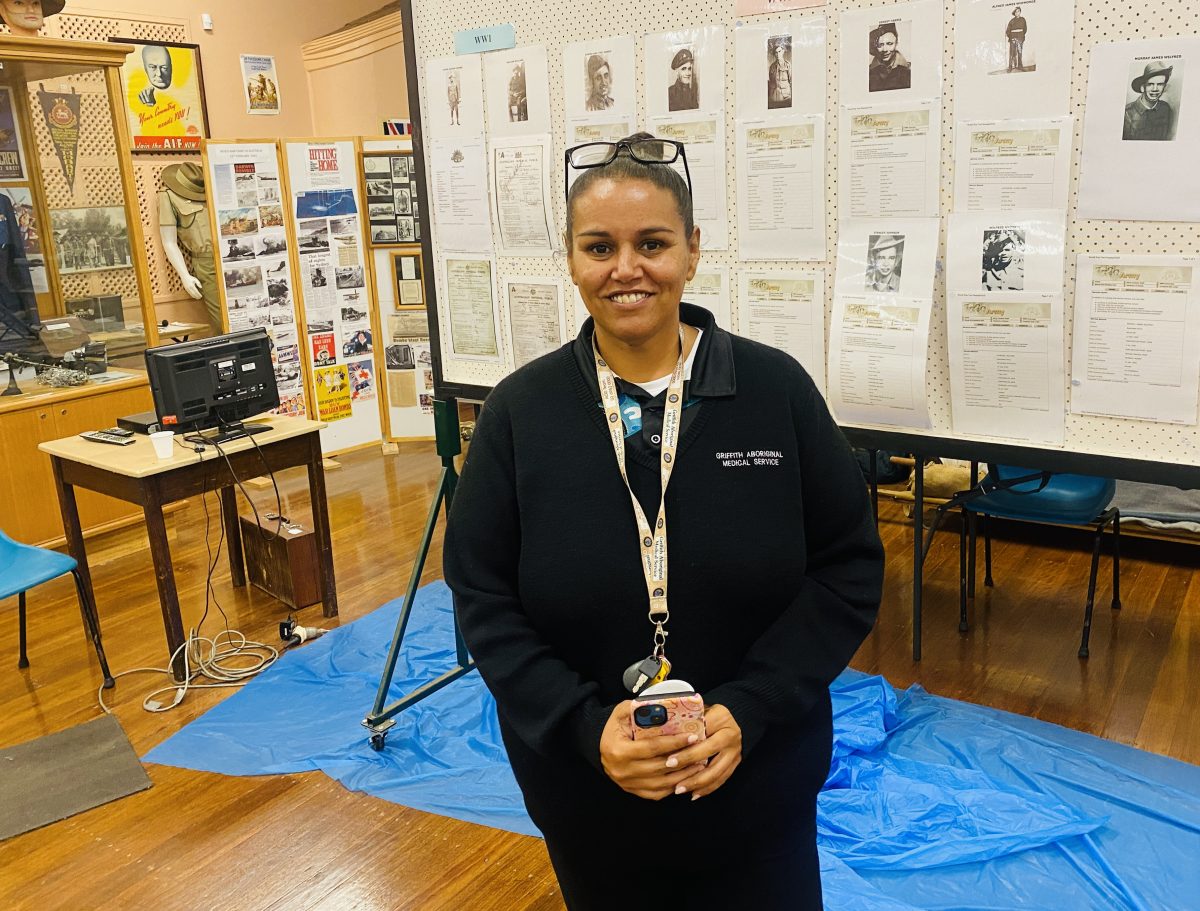
Vickie Louise Simpson learned about her family’s history at the museum. Photo: Oliver Jacques.
Bus driver Keith Williams attended on Friday and told the extraordinary history of his grandfather William, who served in World War I.
“He walked all the way from Ivanhoe to Forbes and they then took them to Sydney and put him on the boat to the South of France. He almost died on the way over due to seasickness.
“I said, ‘Why did you go to war?’. He said there was no money, no work, nothing [in Ivanhoe]. He said, ‘I had to get a job somehow, so I chose that’.”
In armed conflicts, Aboriginal soldiers were often given the most dangerous roles.
“He was a trench runner. He had to run onto the battlefield [completely exposed] to give messages to his comrades. Because he was Aboriginal, he was nothing.
“He was in the trenches and a couple of Germans captured him. One spoke a little bit of English and asked, ‘Why are you fighting? You’ve got no land’. They thought he had paint on him. One of them got a little knife and cut his skin. He was taken in as a prisoner of war.
“He somehow came back to Australia, he went to Perth. When the white Australians came back after the war, the government gave them some land. My grandfather got nothing.”
Ms Simpson said her people were treated badly before, during and after foreign conflicts.
“They were considered medically unfit due to their Aboriginality. They had to lie [about their heritage] to serve in the army.”
The Griffith War Memorial Museum now has exhibits displaying the history of various Indigenous soldiers, with plans to expand their collections.
“One of the things we would like to do is tell all these stories, they definitely should be taught,” museum volunteer Theo Bollen said.
Keith Williams said: “If we don’t tell the story now, they’ll be forgotten.”
The Griffith War Memorial Museum is located at 167-185 Banna Avenue, Griffith NSW 2680.
Its usual opening hours are Fridays 10 am-2 pm and Saturdays 11 am-2 pm.
Further information on the museum can be found on its Facebook Page.







